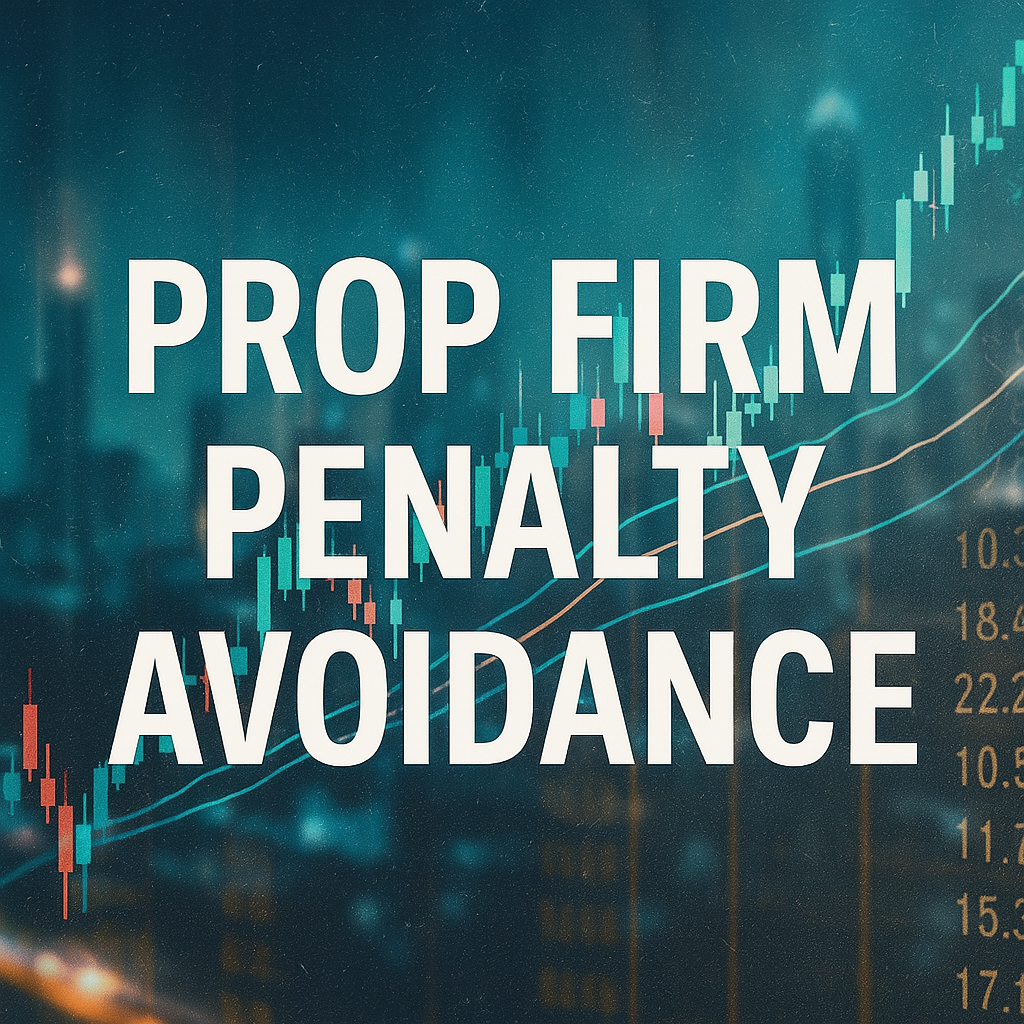How to Avoid Penalties During Your Challenge
Starting a challenge with a proprietary trading firm is an exciting step, but it comes with rules that traders must respect. From day-one performance expectations to strict loss limits, every guideline exists to simulate responsible trading behavior. In this guide, we focus on prop firm penalty avoidance, helping you steer clear of violations and move confidently toward a funded account.
Avoiding penalties is not about trading less—it’s about trading smarter. By understanding the mechanics behind risk controls, evaluation rules, and psychological pressure, you can optimize your performance while staying compliant.
Why Prop Firm Penalty Avoidance Matters
Trading under evaluation is different from trading a personal account. When working within a prop firm’s framework, penalties serve as a filter to select disciplined traders. Whether it’s a soft breach like trading over the weekend without permission or a hard breach like hitting the maximum drawdown, these mistakes can halt your progress instantly.
The best-funded traders don’t just know how to win—they know how not to lose by breaking rules. If your goal is long-term funding, penalty avoidance must be at the core of your strategy.
Understand the Rules Before You Trade
The first and most obvious step in penalty avoidance is to read the challenge rules in full. You’d be surprised how many traders skip this step and jump directly to the charts. Before placing any trade:
-
Review the maximum daily and overall loss limits
-
Understand the minimum trading days requirement
-
Check for news trading restrictions
-
Clarify rules regarding weekend and overnight positions
-
Note the allowed trading instruments and strategies (e.g., hedging, copy trading)
At Larsa Capital, for example, trading within 5 minutes of high-impact news is prohibited during the evaluation. This rule exists to reduce exposure to volatility spikes, and violating it—even once—can invalidate your performance.
Create a Personal Risk Management Plan
A firm may offer you $100,000 in virtual capital, but your real capital is your discipline. Creating a risk management plan aligned with the firm’s rules will shield you from penalties even on bad trading days. Key components of your plan should include:
-
Daily loss buffer: Set a self-imposed limit at 80–90% of the firm’s max daily loss.
-
Position sizing formula: Use fixed or percentage-based lot sizing depending on market conditions.
-
Stop-loss enforcement: Never remove a stop-loss to “let it breathe.”
-
Trading frequency limit: Overtrading increases the risk of accidental breaches.
Planning doesn’t remove risk—it structures it within a safer framework.
Emotional Discipline: The Silent Enforcer
A significant part of prop firm penalty avoidance revolves around mindset. Challenges are designed to test how you perform under pressure. Emotional decisions often lead to rule violations, especially during the following scenarios:
-
Trying to recover from a loss too quickly
-
Forcing trades to meet the minimum day requirement
-
Trading impulsively during news releases
-
Doubling position sizes mid-session
To combat this, develop pre-trade checklists, schedule regular screen breaks, and log every trade for post-analysis. Mindful trading reduces reactive errors and improves consistency over time.
Subtle Triggers That Can Lead to Penalties
Not all violations are obvious. Some penalties result from technical oversights or misunderstood rules. Here are a few examples:
-
Closing all trades seconds before a news event (still counts as breaching the time window)
-
Increasing lot sizes dramatically during a winning streak (which can be flagged for inconsistency)
-
Trading forbidden assets due to incorrect platform filtering
-
Violating time-based rules by forgetting about time zone differences
This is why it’s essential to read every rule twice and verify settings before entering trades. Automation tools like alerts and timers can also help mitigate accidental breaches.
Strategies to Ensure Rule Compliance
To actively reduce the chance of penalties, consider these strategies:
-
Use a tracking spreadsheet to log daily equity, drawdown, lot sizes, and risk-per-trade metrics.
-
Enable trading platform alerts for rule-sensitive times, such as news releases or session open/close hours.
-
Simulate the challenge rules in a demo account before starting with real evaluation.
-
Set a maximum trades-per-day limit to avoid overexposure and fatigue-induced errors.
-
Avoid “revenge trading”—if you breach your own rules emotionally, you’re more likely to breach the firm’s rules next.
These habits not only improve compliance but also build professional discipline.
Prop Firm Penalty Avoidance in Practice: A Daily Routine
Here’s how a disciplined trader structures their day to avoid penalties:
1. Morning Preparation
-
Check the economic calendar.
-
Review the firm’s news trading window restrictions.
-
Recalculate the available drawdown buffer.
2. Trade Execution
-
Use alerts for news events and key levels.
-
Size positions based on real-time volatility.
-
Log every trade’s rationale, risk, and exit strategy.
3. Post-Session Review
-
Update your daily report.
-
Analyze trade outcomes against your rules.
-
Reflect on psychological triggers that surfaced.
This structured approach strengthens accountability and minimizes emotional trading.
When Mistakes Happen, Learn and Reset
Even the most careful traders can slip. What matters is how you respond. If you breach a rule:
-
Stop trading immediately for the day.
-
Review your trading journal to identify what led to the mistake.
-
Contact support (if applicable) to clarify the violation.
-
Apply what you’ve learned to prevent repeat errors.
Sometimes the lesson learned from a penalty is more valuable than the trades that came before it.
Final Thoughts
Avoiding penalties during your challenge isn’t about walking on eggshells—it’s about trading like a professional. By mastering prop firm penalty avoidance, you build a foundation of trust, discipline, and repeatable results that prop firms like Larsa Capital are eager to reward.
Set your rules, respect the firm’s guidelines, and trade with a mindset of long-term consistency. That’s how you cross the finish line—not just once, but again and again.

